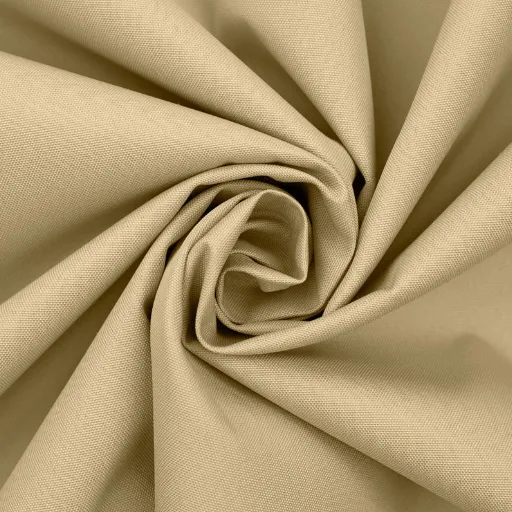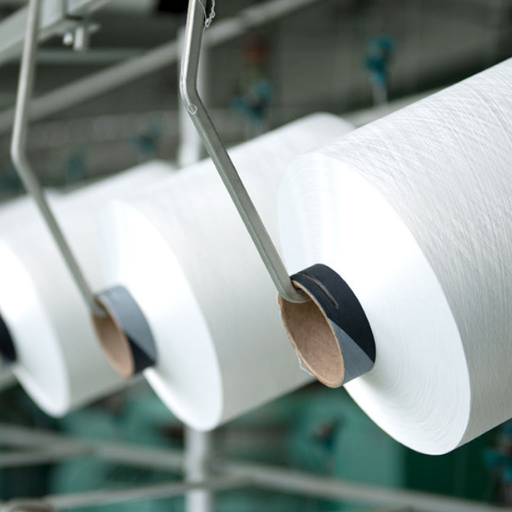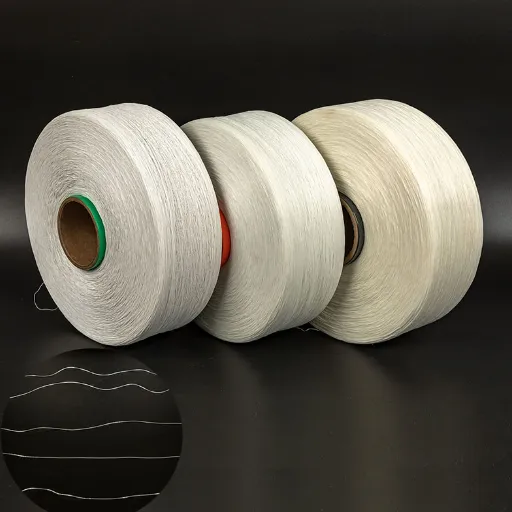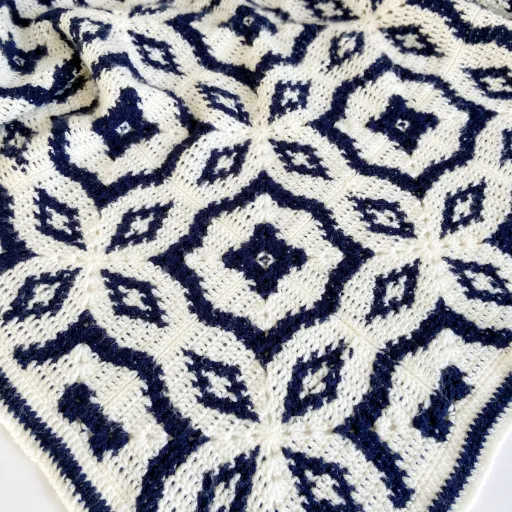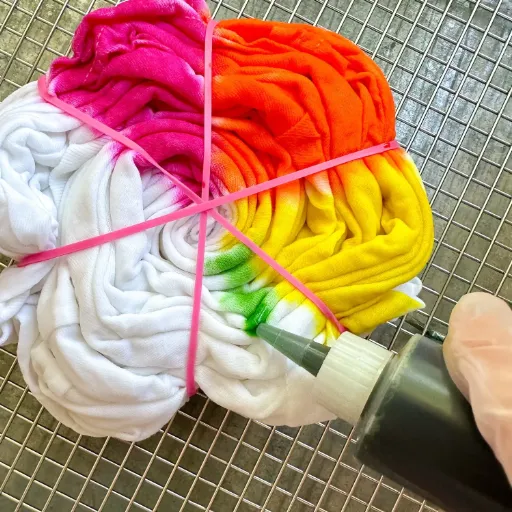When it comes to selecting the perfect type of fabric for clothing, upholstery, or other applications, the distinguishing features of the fabric in question come into play. Both polyester and acrylic fabrics enjoy an extensive usage, and so much is said about their versatility, durability, and affordability. Yet each does present qualities unique to itself that find it well-suited for particular tasks. In this blog, we will focus on the key differences between polyester and acrylic to help you make an informed decision, covering their pros and cons as well as their suitable application scenarios. If you have ever been thinking about which one is more suited to your task or lifestyle, you are on the right site-keep reading!
Overview of Polyester and Acrylic
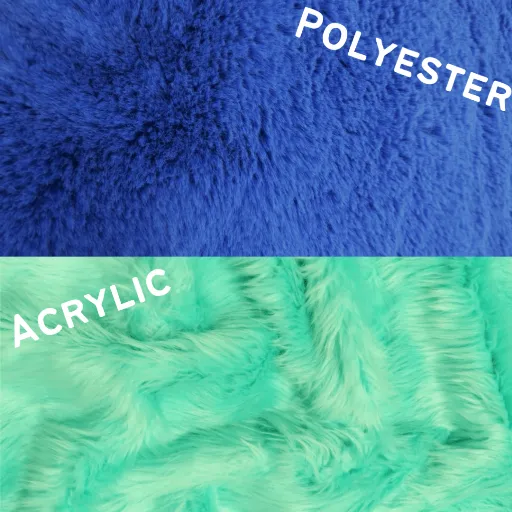
Polyester and acrylic are synthetic fabrics that undergo chemical production processes; their composition and key properties differ. Polyester is robust, resistant to shrinkage, and excels in durability, making it widely used in apparel, upholstery, and various other industries. It is also moisture-disturbing, a quality good for sportswear. Acrylic, on the other hand, is light, soft, and warm and is mainly considered a substitute for wool, with sweaters, blankets, and cold-weather clothing items being typical applications. While polyester is superior in durability and versatility, acrylic stands out in terms of comfort and insulation. Both fabrics are inexpensive and commonly used, but the choice depends on the intended application.
What Are They?
Polyester and acrylic are synthetic fabrics used in various textile applications. The polymer-based fabric that becomes stronger with repeated washing and exposure to various conditions is known as polyester and forms blends with other fibers to enhance these properties. It is also used for clothing and industrial materials. Yet another synthetic fiber is made from acrylonitrile monomers to mimic the characteristics of wool, thereby retaining its soft and warm properties. Both of these materials are less expensive than their natural counterparts and are used in numerous applications across the clothing and home industries. These fibers place a high premium on their utilities and work great for every need, and hence they stand tall among manufacturers today.
Why Are They Popular?
Some synthetic fibers, such as polyester and acrylic, are widely popular due to their cost-effectiveness, durability, and versatility. According to the latest data on search trends, consumers prefer these materials due to their low maintenance qualities and resistance to shrinking, wrinkling, and fading. Polyester is a strong and quick-drying material, making it ideal for activewear and outdoor gear. Acrylic, on the other hand, is considered a warm yet lightweight fabric, pleasant to wear, and ranks among the closest substitutes to real wool. Furthermore, they can be produced in large quantities easily, which is an added advantage that enhances their availability and versatility in end-use applications. The sheer capability of these fibers to change texture and feel and be treated in different colors also ensures their continuous demand from all manufacturers and consumers.
Composition and Manufacturing Process
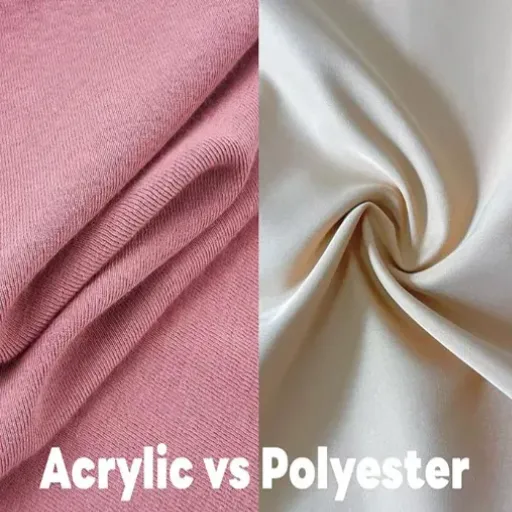
The composition of synthetic fibers such as polyester and acrylic involves polymer molecules derived from petrochemicals. Polyester is primarily made from polyethylene terephthalate (PET), while acrylic is composed of acrylonitrile. The manufacturing process begins with the extraction and purification of raw materials, which are then chemically processed and melted to form a viscous solution. This viscous solution is extruded into fine fibers through spinnerets. The fibers are then cooled, stretched, and treated in various ways to impart the required strength, texture, and finish for a wide range of textile applications and uses.
Polyester Fabric Composition
Polyester fabric is primarily composed of polyethylene terephthalate (PET), a synthetic polymer derived from petroleum-based products. The formation of the composition occurs through polymerization, during which ethylene glycol and terephthalic acid react together in the presence of high temperature and vacuum conditions to form various lengths of polymer chains. These chains form the backbone of polyester, providing features such as lightness, strength, and resistance to wrinkling. Technological developments are now underway to incorporate recycled PET derived from plastic bottles into polyester manufacturing processes, with the primary aim of promoting sustainability in the textile industry.
Acrylic Fabric Composition
Acrylic fabric is essentially a synthetic fiber derived from polymerized acrylonitrile. This process involves reacting acrylonitrile with other chemicals, such as vinyl acetate or methyl acrylate, to form long polymer chains. These chains are then spun into fibers by either a wet or dry spinning process to create a material that has wool-like soft and warm characteristics. Being both lightweight and sturdy, acrylic finds widespread use in various types of apparel, including sweaters, scarves, and blankets. Furthermore, in recent times, partly due to advancements in production technology, acrylic fabrics are largely colorfast and resistant to fading, making them a perfect option for brightly colored textiles. However, scientists are still seeking solutions to environmental problems associated with acrylic production and disposal, either through bio-based alternatives alone or in combination with efficient recycling techniques.
Key Properties and Performance
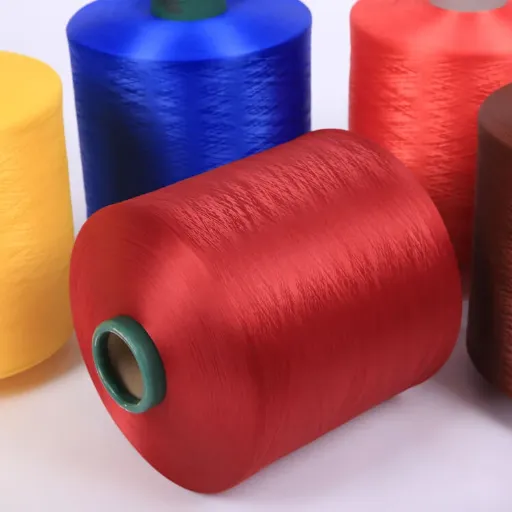
Acrylic fabric is typically described as a lightweight, soft, and smooth material with a texture that is almost frothy. It shows minimal fading unless exposed to harsh sunlight over extended periods, with colors remaining vibrant enough to attract attention. Acrylic material has good heat-retention properties; it feels warm, like wool, and is relatively easy to care for. On the other hand, it is not breathable, like natural fibers, and can wear away quickly. This combination of factors indeed renders acrylic a highly versatile fabric, well-suited for a wide range of uses, from apparel to home furnishings.
Durability Comparison
Acrylic Durability
- Highly resistant to mothing
- Withstands day-to-day wear and tear
- Greater tendency to pill compared to natural fibers
Natural Fibers Comparison
- Wool: Durable structure, prone to insect attack
- Cotton: Soft and breathable, wears out faster
- Requires special care considerations
The issue of durability, however, does not arise when considering acrylic in conjunction with its other counterparts, such as wool and cotton. These differences demonstrate that acrylic is highly resistant to mothing and can withstand the day-to-day wear and tear that make it suitable for regular use in any item one may think of. However, it has a greater tendency to pill when compared to natural fibers, such as wool. Yet, wool is very durable in terms of retaining its structure and insulating properties, while it is prone to insect attack and requires special care to prevent shrinking or felting. The other type of fiber, cotton, though breathable and soft, tends to wear out faster with heavy use and is not very resilient to the harsh natural factors, such as moisture, over time. With an understanding of these variations, one can go a long way in ensuring that a specific material is selected for a particular purpose and that it prioritizes maintenance over longevity.
Texture and Feel Differences
From considering conformity to texture, composition, and treatment both play a significant role. Wool, in general, is soft, warm, and slightly textured, making it an ideal choice for cold climates and cozy applications. Additionally, its natural elasticity enables it to stretch and recover without losing its shape. In contrast, cotton feels smooth, airy, and breathable, making it suitable for both warmth and those with sensitive skin. The final choice may even depend on personal preference or, most certainly, the context in which the material is to be used: wool, due to its warmth, is best suited for winter, while cotton, which is soft and light, is ideal for summer.
Moisture Management Properties
Wool Properties: Raw fibers directly affect the properties they exhibit in moisture management systems. Wool exhibits incredible moisture-wicking properties; it can absorb perspiration but dries very quickly on the surface, allowing the garment to maintain body temperature under varied extreme weather conditions. It provides better comfort under cold and damp conditions, offering absorption of 30% of its weight in moisture.
Cotton Properties: Cotton fibers absorb a significant amount of moisture but tend to retain it; after prolonged use, they become wet and heavy.
Modern Innovations: With improvements in textile technologies, fibers can be blended with synthetics to impart moisture-wicking functionalities for sports and activewear. A clear understanding of these properties helps to assess the best option when specifying the garment for a given climate, activity level, and personal requirements.
Cost-Effectiveness
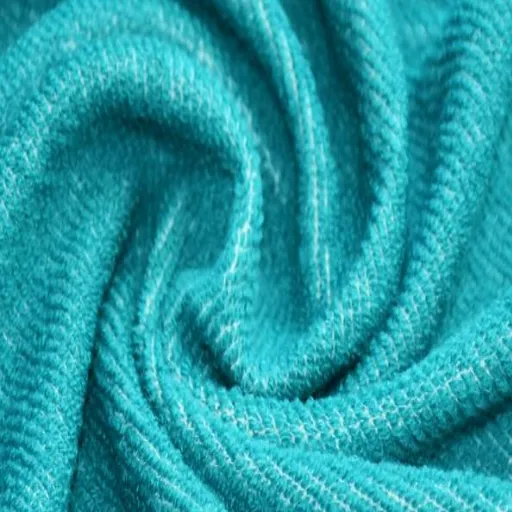
Cost-effectiveness in textiles depends mainly on the expected lifespan and an equilibrium between its initial price and its actual value in the long run. Initially, cotton and other natural fibers have a reputation for being less expensive, but they require more frequent replacement due to wear and tear. Conversely, synthetic fibers tend to have a higher initial cost. Still, being more durable and less demanding in terms of maintenance, they might prove to be an economical option over time for activities requiring durability and performance. When choosing any material, one should consider one’s budget and the specific needs to get the best value.
Affordability of Polyester and Acrylic
| Material | Initial Cost | Key Features |
|---|---|---|
| Polyester | Generally cheaper | Mass-produced, cost-effective raw materials |
| Acrylic | Slightly higher premium | Enhanced softness, warmth, vivid dye uptake |
It is generally accepted that polyester and acrylic are inexpensive materials, and therefore, they are widely used in various industries. Historically, polyester has been slightly cheaper, as it is mass-produced and raw materials are more cost-effective. Acrylic, still inexpensive, tends to command a somewhat higher premium when enhanced softness, warmth, or vivid dye uptake is demanded by the final product; such might be the case with heavier yarns or garments. Both materials have pretty good durability and require minimal maintenance, which ensures their long-term value from an economical standpoint. In practice, one must decide between polyester and acrylic on a case-by-case basis, considering how and for what purpose it will be used, to strike the right balance between cost and performance.
Longevity and Its Impact on Cost
Longevity is a factor of paramount consideration when evaluating its overall valuation. Recent studies have revealed that, whereas polyester materials generally last longer before being worn out, acrylic materials have a contradictory application, but theoretically, in the sense that polyester materials are more resistant to abrasion, UV, and environmental conditions, and thus can outlast acrylic.
A longer life can offset higher initial prices by reducing the need for replacements. For example, polyester is more durable as an outdoor fabric or upholstery and will perform with sustained excellence, resulting in a more cost-effective option in the long run.
Although acrylic offers more user friendliness and aesthetics, it may sometimes provide half the resistance against high levels of use or extended exposure, necessitating frequent replacements, which may ultimately increase the cost of expenditure over time. Hence, it is essential to consider both the upfront costs and actual performance to determine the best value for investment.
Environmental Impact
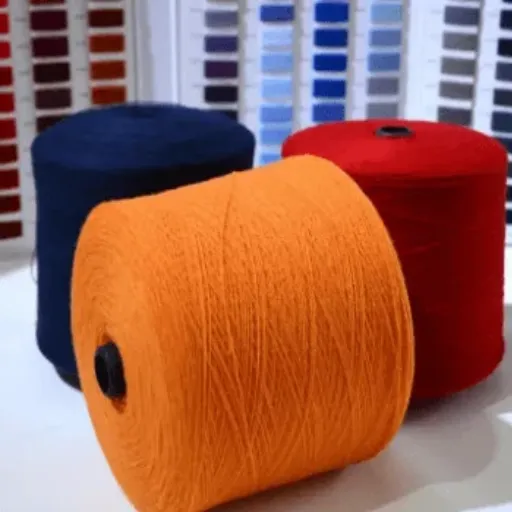
The primary concern with both polyester and acrylic is environmental, primarily due to their production processes and the fact that they are synthetic materials derived from petroleum. The polyester manufacturing process consumes high amounts of energy while producing greenhouse gases; acrylic production, meanwhile, uses toxic chemicals in its manufacture. Neither will biodegrade, creating problems in microplastic pollution when we wash them down the drain. However, in recent times, polyester has been increasingly promoted for its recyclable properties, which help reduce its environmental footprint. Recycled or sustainably sourced options further mitigate the environmental consequences associated with these materials.
Production Footprint of Polyester and Acrylic
The environmental quality of polyester and acrylic production may be improved by investing in innovation and sustainability. Some of the innovative approaches, such as closed-loop recycling processes for polyester, seem promising as they ensure old materials are recycled again without using any virgin resources. Furthermore, research aimed at creating a biodegradable alternative to acrylic or developing non-toxic production methods for acrylic would drastically reduce the environmental impact it currently has. Proper washing techniques, including the use of filters that catch microfibers, also need to be promoted among the masses to limit microplastic pollution significantly. The scientific community, together with the industry and consumers, needs to partner up to reduce the ecological footprint of these widespread materials substantially.
Sustainability Trends in Fabric Production
- Biodegradable Fibers: The textile industry is undergoing a significant shift toward innovative solutions that align with sustainability goals. One interesting aspect that trends away from is biodegradation and bio-based fibers, which, under their name, imply some capacity to disintegrate into environmental hazards.
- Organic Alternatives: Organic cotton, Tencel, hemp, among others, have gained a certain level of preference over conventional synthetic fabrics.
- Recycled Materials: On its way, recycled materials from certain types of polyester, obtained from secondary sources such as post-consumer plastic bottles, are being introduced to minimize waste tension among producers and conserve resources.
- Advanced Technologies: To further support these sustainability initiatives, advanced technologies are incorporated, including dyeing processes that minimize water usage and environmentally friendly finishing methods.
- Consumer Awareness: These, together with the surge in consumer awareness of environmentally friendly products, drive the fashion industry’s march towards sustainability, highlighting the urgent need to balance functionality with environmental responsibility.
Practical Applications
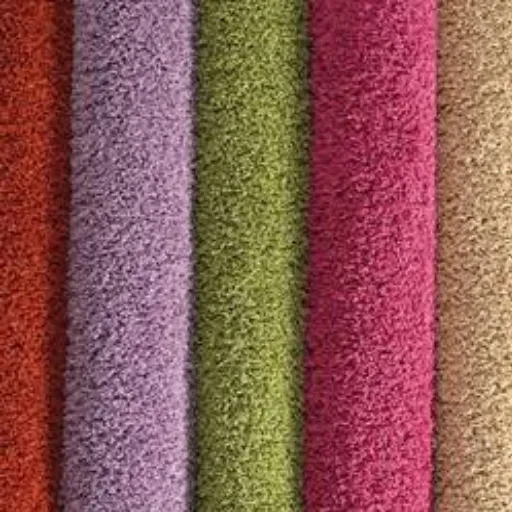
Sustainable fabrics have a range of practical applications across various industries. They are utilized in fashion to create eco-friendly apparel and accessories that appeal to environmentally conscious consumers. For the furniture industry, these fabrics are used for upholstering services and home décor, allowing interior design to place less pressure on the environment. On the other hand, these fabrics are also used in automotive interiors, providing a mixture of durability and sustainability. The application fields present a wide range of possible uses for sustainable fabrics, while also responding to the growing need for greener alternatives in both consumer and industrial markets.
Uses of Polyester in Textiles
Polyester offers versatility unmatched by any other fiber, boasting durability, cheapness, and versatility. It finds application in the manufacture of mere clothing, wrinkle-resistant apparel, and activewear because Polyester is moisture-resistant. In the realm of home textiles, Polyester is equally valid, with curtains, upholstery, and bedding made using the material. Its strength, combined with good shrink resistance, makes it a suitable choice. The development of recycling technologies has promoted the recycling of polyester, known as rPET, thereby reducing reliance on virgin raw materials and addressing some environmental issues. This green effort in sustainable world production thereby helps keep polyester in the great chain of greener production avenues within the textile world.
Uses of Acrylic in Knitwear and Upholstery
In knitting and upholstery, acrylic is used because of its lightweight and soft texture. I like it for its ability to withstand rough use, which makes it ideal for making sweaters, scarves, and blankets. Upholstery-wise, acrylic is a good option, as it resists staining and fading from sunlight, promising long-lasting use.
Benefits of Blended Acrylic and Polyester Fabrics
Key Benefits
- Enhanced durability and comfort
- Soft and stretchy texture
- Excellent moisture-wicking properties
- Brilliant color retention
Applications
- Activewear and sportswear
- Home furnishings
- Summer clothing
- Versatile textile solutions
The blend of acrylic and polyester is designed to provide durability, comfort, and utility. The acrylic makes the fabric soft and stretchy, while polyester lends the fabric strength, wrinkle resistance, and moisture-wicking properties. Colors stay brilliant in this blend, even after numerous washes. Additionally, the fabric is lightweight, making it an excellent choice for activewear, home furnishings, and summer wear. It also enhances the fabric’s versatility, as it is resistant to shrinking and stretching. Therefore, the fabric exhibits versatility that transcends form, finding applications in various settings.
Reference Sources
Here are five professional and authoritative sources that can be used to validate the correctness of your article on “polyester and acrylic”:
- “Research and Prospect of Acrylic Polyester Resin Synthesis Process”
This paper explores the possibility of preparing acrylic resins and polyester resins, or modifying them for specific applications. - “Synthetic Fibres: Nylon, Polyester, Acrylic, Polyolefin”
A book titled “Synthetic Fibers: History, Characteristics, and Applications” should be suitable for our Google Books. - “Polyester Resins”
The information provided here on polyester resins, their properties, and applications in a broad range of industries is considerable in scope and breadth. - “Recent Advancements in Acrylic Fabric Applications: A Comprehensive Review and Future Trends”
This review, published by MDPI, highlights the progress in the applications and performance of acrylic fabrics compared to other materials, such as polyester. - “LCA Benchmarking Study on Textiles Made of Cotton, Polyester, Nylon, Acryl, or Elastane”
This is an environmental comparison of the various textile materials, including polyester and acrylic, conducted and published by Springer through a life cycle assessment study.
Frequently Asked Questions (FAQs)
What is the main difference between polyester and acrylic?
The main difference between polyester and acrylic lies in their fiber composition and properties. Polyester is a synthetic fabric renowned for its durability and resistance to wrinkles. At the same time, acrylic is softer and often used as a wool substitute, providing warmth but being less breathable than polyester.
Is polyester or acrylic better for outdoor gear?
Polyester is generally preferred for outdoor gear due to its moisture-wicking properties and durability. It can withstand various weather conditions and is resistant to color fading, making it a reliable choice for outdoor clothing and gear.
How do acrylic and polyester fabrics differ in terms of softness?
Acrylic is known for its softness and warmth, making it comfortable to wear. In contrast, polyester is more durable but may feel less soft against the skin. When choosing between the two, consider the desired level of comfort and warmth.
Can I use acrylic yarn for knitting sweaters?
Yes, acrylic yarn is often used for knitting sweaters due to its softness and warmth. Additionally, it is easy to care for and comes in a wide range of colors, making it a popular choice for various knitting projects.
Are polyester fabrics more durable than acrylic fabrics?
Yes, polyester fabrics are generally more durable than acrylic fabrics. Polyester is renowned for its strength and resistance to wear and tear, making it a preferred choice for both clothing and home furnishings.
Which fabric is more breathable: acrylic or polyester?
Polyester is more breathable than acrylic. While acrylic provides warmth, it tends to retain moisture, making it less breathable. For applications where breathability is essential, polyester is the better choice.
How do I choose between acrylic and polyester for my project?
When choosing between acrylic and polyester, consider the specific needs of your project. If you require durability and moisture-wicking properties, polyester is an ideal choice. If softness and warmth are your priorities, acrylic may be the better option.
Are there any environmental benefits to using recycled polyester?
Yes, using recycled polyester helps reduce waste and the environmental impact of textile production. It is a sustainable option that retains the durability and moisture-wicking properties of traditional polyester while promoting eco-friendliness.
What are the key differences in the production process of polyester and acrylic?
The production process for polyester involves polymerization of petroleum-based products, resulting in polyester fibers. In contrast, acrylic is made from acrylonitrile, a synthetic fiber derived from natural gas. These different processes contribute to their distinct properties and uses.
Can polyester and acrylic be blended?
Yes, polyester and acrylic can be blended to create fabrics that combine the best qualities of both materials. Blending can result in a fabric that offers durability, softness, and warmth, suitable for various applications in clothing and home textiles.









